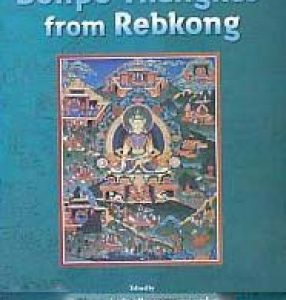
Musashi Tachikawa

Showing all 13 books












Abhayakaragupta (11th-12th cent.), who was an abbot of the Vikramasila Monastery in India, compiled a survey of the structure of mandalas. This work, called the Nispannayogavali (NPY, Garland of Completed Yogas), describes briefly the deities of each of the twenty-six mandalas considered to be popular at that time. It has become a standard reference work on mandalas in India, Tibet and Nepal. In the Kathmandu Valley, this work has been used as one of the most ...


Buddhism does not recognize a concept of the existence of God (theos) such as found in Christianity, but here theos is not used to refer only to an absolute deity like the Christian god. By "theology," the author means the systematic delineation of the confrontation with the condition of the times while carrying on the engagement between the divine and oneself.
Buddhism has spread widely down to the present and it manifests great diversity, in such ...

This book treats two representative Hindu rituals of contemporary India, Puja (offering service) and Samskara (initiation rituals at important occasions of life). Samskara rites are performed at significant junctures of an individual’s life, from birth to death, by the individual’s family. Puja rites, rather than being performed in relation to the life cycle of an individual in a family, are more deeply related to the annual rituals of the cult to which an ...

From the Vedic Samhitas down to the manuals of Vedic schools, it is observed that the Vedic ritual has undergone considerable modifications as a result of changing geographical, social and economic conditions. The tradition of solemn Vedic ritual is fast disappearing and it is becoming more and more difficult to witness a proper performance of a sacrifice that follows the tradition faithfully. It is therefore imperative to record whatever is available at present ...

Bon is one of the pre-buddhist religions of Tibet and has its own importance. This is the first volume of Bon Studies Series. In this book, the renowned scholars of Bon Studies have made efforts to present the importance of Bon Mandalas. It contains 132 Mandalas with their names and descriptions in Tibetan as well as in Romanized Tibetan. Originally, these Mandalas were painted in accordance with the ritual text explaining the theory and practice of Mandala. The ...

The book: Five Hundred Buddhist Deities is intended to present a reproduction of Five Hundred Deities of Narthang in an enlarged size. Here in this book each square of a folio is separated and enlarged together with the mantra of each deity. In the fifteenth regnal year of the Manchu Emperor Chia ch'ing, i.e., in 1810, the Imperial Treasurer Blo bzang dkon mchog and others requested the Fourth Panchen Lama to initiate them into the great Mandala of the First ...

Three Hundred & Sixty Buddhist Deities contains an important collection of line drawings of Tibetan Buddhist deities. Since the collection contains the figures of about three hundred & sixty Buddhist deities, it has been called “Three Hundred And Sixty Buddhist Deities.†The original title of the collection is in Chinese: Chu Fo P’u-sa Sheng Hsiang Tsan (The Eulogy of Sacred Images of Buddhas and Bodhisattvas). Obviously, the collection of Tibetan ...

The iconography of Nepalese Hinduism is essentially the same as that of Indian Hinduism. There are, however, some important differences between them. One of the most important difference is that Nepalese Hinduism emphasizes the Eight Matrkas: and the Eight Bhairavs. In the Kathmandu Valley one can find many temples which possess the relics or struts depicting the Eight Matrkas: Mahalaksmi Brahmayani (Skt.; Brahmani), Rudrayani (Skt., Rudrani), Camunda, Kaumari, ...

Scholars of the Ngor Monastery belonging to the Sa skya School of Tibetan Buddhism started to compose a systematic work of theories and practices of Indian and Tibetan mandalas in 1870 and finished its publication by 1894. The title of this work is the rgyud sde kun btus (collection of the Tantras), which consists of thirty-two volumes. The work was reprinted in India during 1971 and 1972. Probably shortly after the completion of the compilation of texts at the ...

The discovery of fire is a very important event in the humancivilisation. In ancient times, however, it was difficult to create fire. This gave rise to the idea of maintaing the fire all the time and also to fire-worship. Thus, the fire worship is very common in most of the religion in the world. In Ancient India also, the ancestral fire or the marriage-fire was always kept alive in the house. For that purpose it was ritually given the morning and evening ...

This book is a study of the Mulamadhyamakakarika (Middle Stanzas), the fhief work of Nagarjuna (2nd-3rd cent.), who established the theoretical foundations of Mahayana Buddhism and is known in Japan as the founder of the eight sects. The Middle Stanzas is a treatise that integrates the concepts of dependent co-arising (Pratityasamutpada) and emptiness (sunyata), fundamental to the thought of Mahayana Buddhism, but the manner in which Nagarjuna develops his ...
